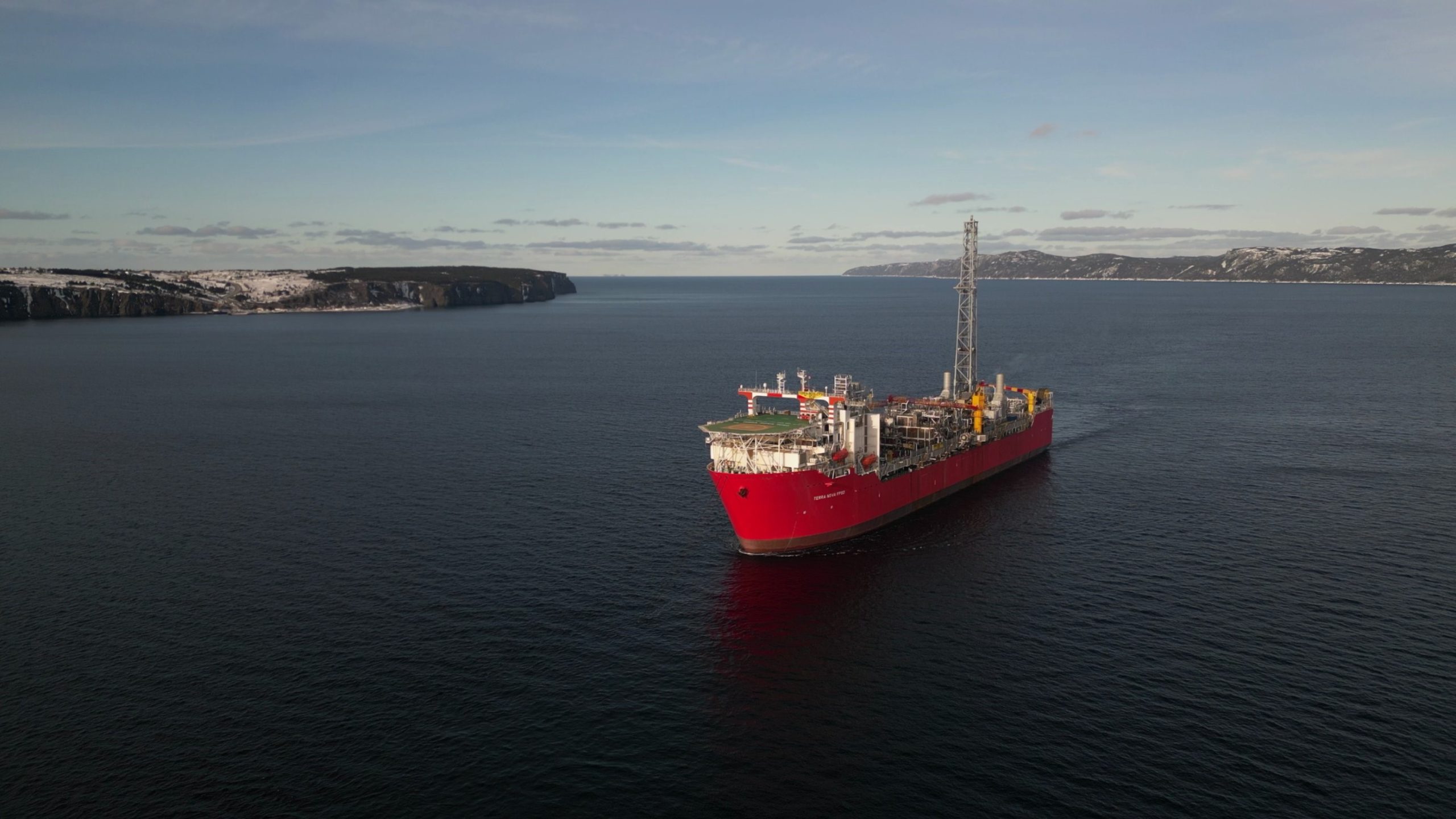Terra Nova, an oil production, storage, and offloading vessel majority-owned by Suncor Energy, has returned to Newfoundland and Labrador waters after a $500 million overhaul.
The work is expected to extend production at the Terra Nova oil field by 10 years, delivering economic benefits to the region and an additional 70 million barrels to global markets.
“Oil production is a big part of our GDP,” says Danny Breen, mayor of St. John’s, N.L.
“During the time oil production from Terra Nova wasn’t there, our GDP was very low. It’s expected next year we’re going to lead the country in GDP growth and that’s due to the return of oil production.”
The Terra Nova project is a significant employer and business spender. In the third quarter of 2022 alone – without any oil production – it directly employed 713 people and spent $8.9 million with businesses in N.L. and Canada, Suncor reports.
The benefits of Terra Nova run much deeper than on-site employment, says Charlene Johnson, CEO of Energy NL, an energy advocacy group.
“Consider the thousands of people in the service and supply sector when you look at the benefits in terms of taxes and royalties to the province,” she says.
Projects off the coast of N.L. have produced more than one billion barrels of oil since the Hibernia platform started operating in 1997.
“Our capabilities in the offshore are second to absolutely no one,” says Johnson.
The Terra Nova vessel can store 960,000 barrels of oil and accommodate a crew of 120. Stationed 350 kilometers offshore near producing wells on the Grand Banks, it offloads crude oil onto large shuttle tankers for shipment.
The 292-metre, double-hulled vessel hasn’t operated since 2019. Suncor says production will resume by mid-2023.

Suncor Energy’s Terra Nova FPSO. Photo courtesy Suncor Energy
In the meantime, Breen sees promise in the industry’s future.
“If you look at overall oil production, there are so many resources left,” he says. “It will be a big part of our economy in the years to come. It will continue to produce revenue for the province.”
While the main market for Newfoundland and Labrador’s offshore oil is the United States, projects sent an average of about 83,000 barrels per day to Europe between 2015 and 2021, according to Statistics Canada.
Those oil exports had a total value of $11.4 billion.
Europe’s top five purchasers of Canadian offshore oil over the last half-decade were the United Kingdom ($4.1 billion), Italy ($2.3 billion), Netherlands ($2 billion), Spain ($1.8 billion), and Ireland ($457,000).
While Europe’s energy supply from renewable sources like wind and solar is growing, oil and gas will remain critical to the energy mix for decades to come, according to BP’s latest world energy outlook. Oil and natural gas are expected to still supply nearly 30% of Europe’s energy demand in 2050.
There are four producing oil fields off the coast of Newfoundland and Labrador: Hibernia, Hebron, White Rose and Terra Nova, when it resumes.
The Terra Nova income stream will help Newfoundland and Labrador diversify its energy mix and transition to a technology-based green economy involving hydrogen production and critical metals, says Breen, noting the project helps prevent emigration from the province.
“If that production is not happening, then people will have to look for work elsewhere,” he says.
There are an estimated 80 million barrels of oil left in the Terra Nova oil field, says Suncor.
The unaltered reproduction of this content is free of charge with attribution to Canadian Energy Centre Ltd.
